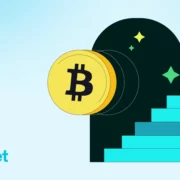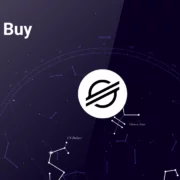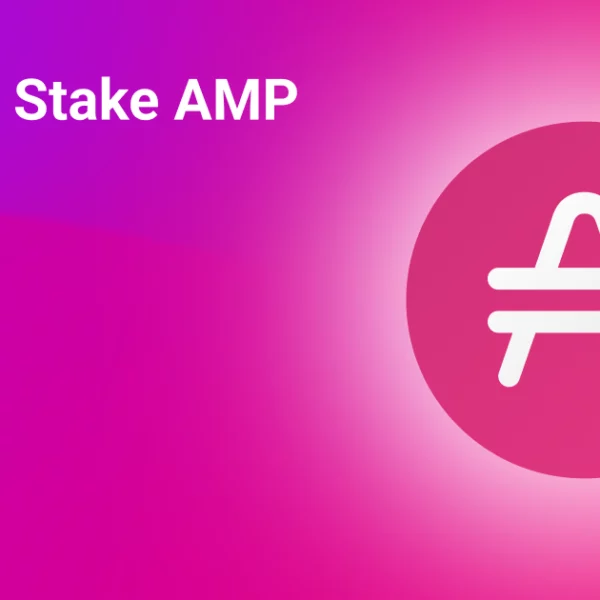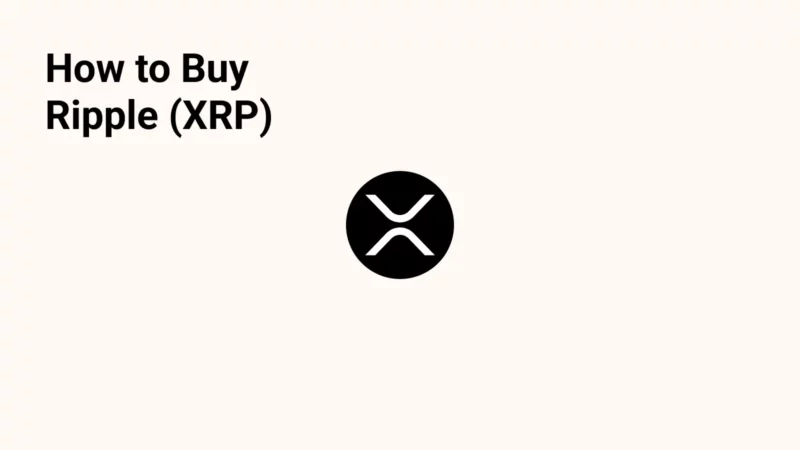
Ripple (XRP) is a digital payment system and currency exchange network that can process transactions worldwide. It’s a global payments network, with major banks and financial services as its customers. The idea behind Ripple is to serve as a payment settlement asset exchange and remittance system, similar to the SWIFT system for international money and security transfers.
Ripple operates on an open-source and peer-to-peer decentralized platform that allows seamless money transfer for various fiat currencies, cryptocurrencies, and even commodities like gold.
XRP is the native token that runs on the XRP Ledger, an open-source, permissionless, decentralized blockchain technology that can settle transactions in 3-5 seconds. XRP can be sent directly without third parties, making it an intermediate mechanism of exchange between two currencies or networks—a temporary settlement layer denomination.
Read on to learn everything you need to know about XRP Ripple and how to purchase XRP in a few simple steps.
What Is (Ripple) XRP?
Ripple is a payments settlement system and currency exchange network designed to become a replacement for SWIFT and facilitate exchanges for a variety of fiat currencies, cryptocurrencies, and even commodities like gold. The network deducts a minimal amount of XRP as a fee to conduct transactions on Ripple.
XRP is the native coin of the XRP Ledger, used to facilitate transactions on the network. You can buy XRP as an investment or as a way to finance transactions on the Ripple network.
XRP Founders
Web developer Ryan Fugger developed Ripplepay, the forerunner to Ripple, in 2004. Fugger aimed to build a decentralized financial system that offered communities safe and secure online payment solutions. Jed McCaleb, David Schwartz, and Arthur Britto, three software developers, decided to create a more sustainable system for sending value without Bitcoin’s high energy consumption and scalability issues. In 2012, they developed a distributed ledger that improved upon these fundamental limitations of Bitcoin, initially naming the code Ripple. The ledger included a digital asset that would initially be called “ripples” (XRP as the currency code). Ripple stood for the open-source project, the unique consensus ledger (Ripple Consensus Ledger), transaction protocol (Ripple Transaction Protocol or RTXP), the network (Ripple network), and the digital asset (known as “ripples”).
80% of the XRP was gifted to NewCoin, soon renamed OpenCoin, and rebranded as Ripple Labs or “Ripple.”
Founded in 2020, the XRPL Foundation is an independent and nonprofit entity with a mission to accelerate the development and adoption of the decentralized XRP Ledger. The Foundation received an initial donation of over $6.5M from Coil, Ripple, and Gatehub
Today, Ripple has created a use case leveraging the XRP Ledger and XRP for liquidity management in its cross-border payments business. The RippleNet payment platform is a real-time gross settlement (RTGS) system that enables instant monetary transactions globally.
RippleNet’s ledger is maintained by the global XRP Community, with Ripple, the company as an active member.
How Does XRP Work?
Ripple funds the Interledger Protocol, a software platform that facilitates transactions between cryptocurrencies and bank ledgers. XRP also leverages RippleX, allowing developers and entrepreneurs to integrate blockchain technology into their applications with tools and services built on top of the XRP Ledger.
The Ripple network does not run with a proof-of-work system like Bitcoin or a proof-of-stake mechanism like Ethereum 2.0. Instead, it employs a system known as the XRP Ledger Consensus to protect and validate transactions on the system. The consensus works to improve the integrity of the system by preventing double-spending.
Contrary to popular belief in the crypto community, XRP does not rely on any central body for enabling transactions. Its goal is to provide a seamless payment system affordable to all users. In so doing, it uses the Unique Node List (UNL), a decentralized network of validators.
The XRP Ledger is powered by a community of users (or validators) who must agree (create a consensus) to approve all transactions. Unlike other blockchains, however, these validators aren’t compensated so that their performance isn’t affected. Instead, the XRP Ledger is based on the assumption that if a corporation needs to utilize the blockchain, it’s in that company’s best interests to participate in the consensus process and engage honestly.
XRP allows for instant payments and cross-border settlements in as little as four seconds. In comparison, ETH takes 2 minutes to confirm a transaction, but BTC might take an hour or more. XRP can also handle 1,500 transactions per second, outperforming ETH, which can only handle 15 transactions per second.
RippleNet Offers Three Noteworthy Products:
xRapid — offers on-demand liquidity and ensures that transactions like swaps and transfers are readily handled using XRPs kept in escrow accounts.
xCurrent — allows financial institutions to make seamless cross-border payments. It also provides the same institutions with a communication channel to transmit messages and confirm transactions from end to end.
xVia – a simple payment interface that allows institutions to transmit payments, generate invoices, and track deliveries internationally.
Every transaction on the XRP Ledger requires the use of the XRP coin. XRP is destroyed after each transaction.
What Is Ripple Protocol Consensus Algorithm (RPCA)?
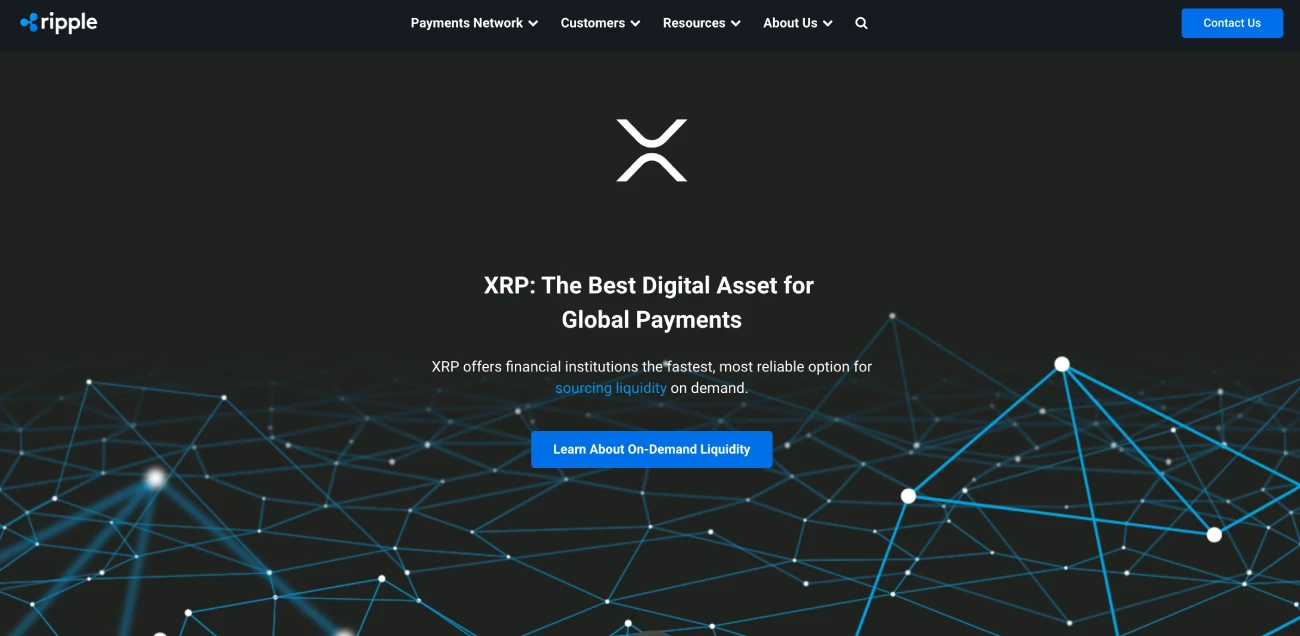
Ripple uses its consensus mechanism, the Ripple Protocol Consensus Algorithm (RPCA), to confirm transactions. Ripple transactions are faster, use less energy, and cost less than Bitcoin or Ethereum transactions because they avoid the Proof-of-Work energy-intensive mining. However, some believe that XRP’s centralized architecture renders the network less secure, censorship-resistant, and permissionless than open-source blockchain networks.
XRP Supply and Tokenomics
The total supply of XRP is limited to 100 billion, which were pre-mined at launch and released gradually into the market by its main investors. As of February 2022, XRP has a circulating supply of 47.8 billion and a market cap of $33.19 billion.
Supply
Upon its formation, Ripple deposited a certain number of XRP coins into escrow accounts to be released at predetermined intervals to ensure that market supply was predictable. Ripple started with 55% of the entire supply; even though Ripple launched with 55 billion XRP, 1 billion fresh XRP are released each month.
Any unused quantities of the 1 billion XRP distributed each month are returned to escrow and re-released in the first month without fresh XRP releases.
Deflation
XRP is a deflationary currency, and every transaction on the XRP Ledger is subject to a modest charge (to prevent spam attacks). Each XRP transaction has a minimum cost of 0.00001 XRP (also known as 10 drops, or a fraction of a cent). Certain transactions, such as multi-signature or escrow transactions, will incur higher costs. The fees, and hence the burn rate, can be changed by the agreement at any moment. Although designed to be deflationary, the circulating supply of XRP will continue to grow as Ripple releases XRP from its escrow accounts.
XRP Price
The XRP price (like that of many other cryptocurrencies) has been highly volatile throughout the coin’s lifetime. Ripple, which had been trading at a fraction of a penny for several years, surged to over $3 between December 2017 and January 2018. This increase was proportionate with the 2017-2018 highs in Bitcoin and Ethereum, which piqued the curiosity of many investors in cryptocurrencies for the first time.
However, Ripple quickly plummeted, following Bitcoin. For much of 2018, the XRP price dropped below $0.50 per token, and by the start of 2020, the coin was only worth $0.19. Despite this, Ripple has continuously been the third most valued cryptocurrency, after Bitcoin and Ethereum.
When the COVID-19 epidemic struck, XRP plunged to a multi-year low of less than $0.14 per coin. By August, the price had recovered to $0.30 and had stayed reasonably steady for the rest of the year. The currency’s value quadrupled to $0.65 per coin in November 2020. However, the positive momentum was halted by the SEC’s claims that Ripple had failed to register XRP as a security. XRP plummeted below $0.22 per token before rebounding in February 2021. Ripple soared to $1.81 per coin after Elon Musk reignited interest in cryptocurrencies in April. XRP price was $0.83 at the beginning of 2022.
How to Buy XRP?
Follow the easy steps below to easily buy Ripple (XRP):
Step #1: Select the Best Exchange to Buy Ripple
Despite XRP’s widespread popularity, few exchanges support XRP due to its legal struggle with the SEC. Most exchanges delisted XRP and banned trading XRP, including Coinbase, one of the major cryptocurrency exchanges.
Although XRP is embroiled in a legal struggle, buying Ripple in many countries worldwide is still legal. Furthermore, there are a handful of trustworthy cryptocurrency exchanges where you can buy XRP.
Visit the market page on CoinStats to view the exchange platforms supporting Ripple. Compare the exchanges’ security, user experience, fee structure, supported crypto assets, etc., to choose the one with the characteristics you need, such as affordable transaction fees, an intuitive platform, round-the-clock customer service, etc. Also, consider whether the cryptocurrency exchange is regulated by the Financial Industry Regulatory Authority (FINRA) and allows you to buy crypto using your preferred payment method.
In the crypto world, any trader is confronted with the initial choice between centralized and decentralized crypto exchanges, so let’s look into the details of each type below.
Centralized Exchange
A centralized crypto exchange or CEX, such as Coinbase, eToro, Binance, etc., is governed by a centralized system and charges specific fees for using their services. Most crypto trading takes place on centralized exchanges, allowing users to convert their fiat currencies directly into crypto easily. Centralized exchanges require their users to follow KYC (know your customer) and AML (anti-money laundering) rules by providing some information and personal identification documents. However, a CEX holds your digital assets on its platform while trades go through – raising the risk of hackers stealing the assets.
Decentralized Exchange
On the other hand, a decentralized exchange (DEX), like Uniswap, SushiSwap, Shibaswap, etc., is not governed by any central authority; instead, it operates over blockchain and charges no fee except for the gas fee applicable on a particular blockchain, i.e., on the Ethereum blockchain. Decentralized exchanges use smart contracts to let people trade crypto assets without needing regulatory authority. They deploy an automated market maker to remove any intermediaries and give users complete control over their funds. Decentralized exchanges are less user-friendly in terms of interface and currency conversion. For instance, they don’t always allow users to deposit fiat money in exchange for crypto; users have to either already own crypto or use a centralized exchange to get crypto. It also takes longer to find someone looking to trade with you as DEX engages in peer-to-peer trade, and if liquidity is low, you may have to accept concessions on price and quickly sell or buy low-volume crypto.
Now, let’s examine the three best cryptocurrency exchanges that support XRP trading.
1. eToro – The Best Exchange to Buy XRP
eToro is one of the world’s most popular financial service platforms. The service is well-liked for supporting thousands of assets across multiple categories. You can purchase DeFi currencies like AAVE and major crypto-assets like Bitcoin, Ethereum, and Ripple (XRP).
The exchange offers many advantages to users, including commission-free trading, a rapid account opening procedure, and an Imitate Trading tool allowing you to copy the moves of some of the best traders. However, eToro only offers one base currency and imposes a $10 inactivity fee after a year of inactivity.
Few cryptocurrency exchanges can compete with eToro in terms of costs. You can purchase XRP tokens without paying any fee. The broker will charge you a 0.5% Forex fee when you make a deposit. Depositing and withdrawing funds is quite simple. The portal accepts PayPal, Neteller, and debit cards as payment methods.
2. Huobi – A Secure Crypto Exchange to Buy XRP
Huobi was established in 2013, soon after Ripple. Since then, it has become a well-known household brand in the crypto world. Huobi – also known as Huobi Global – hasn’t been hacked or experienced any other security concerns. As of 2022, Huobi is assisting and advising Bitmart, a small cryptocurrency exchange, to help them strengthen their security measures.
Huobi supports both spot and margin trading and provides up to 200x leverage on some assets, which is more than other XRP trading platforms. It features a free in-house crypto trading robot using the unique ‘grid trading’ technique. The current backtested 7-day yearly yield is 44%, and the ROI performance data is updated weekly. Huobi also provides high-yield crypto staking with up to 50% APY on several assets, crypto loans, and a welcome bonus.
3. Capital.com – Buy XRP Commission Free
Capital.com is a one-of-a-kind financial services platform. It focuses on contracts for difference (CFDs) – an agreement to pay the difference between the price of an asset today and the asset’s price at a later period when the contract expires. Capital.com provides access to hundreds of cryptocurrencies, including crypto-to-crypto transactions, and supports fiat currencies such as the Hungarian forint and the Belarussian ruble. The fee structure of the service is also appealing – deposits and withdrawals are free. Swap deals are also highly competitive. However, Capital.com has several drawbacks – the service has hidden costs, such as overnight fees applied to specific instruments and a $250 minimum deposit for bank transfers, which is a little steep.
Step #2: Create an Account
After you’ve decided on a reliable exchange, the next step is to open a trading account to buy or sell XRP using a valid email or mobile number.
A link will be sent to your address, and you must click it to verify your account. Once the account is activated, you must create an elaborate password, and you’re good to go.
Some exchanges have strict KYC and AML requirements, and in order to get verified, you must provide personal information such as:
- Full name
- Residential address
- Date of Birth
- ID Document.
In some cases, you might also need to upload a selfie or undergo video verification to finalize the verification process.
Once your identity verification is complete, it’s recommended to activate two-factor authentication (2FA) for an extra layer of security.
Step #3: Fund Your Account
The next step is to deposit funds into your account. Many crypto exchanges support fiat currencies like USD, EUR, etc. Simply select your preferred deposit method, such as a bank transfer, wire transfer, credit or debit cards, e-wallets, PayPal, etc., and the currency you wish to deposit. Tap on “Deposit Funds,” enter the amount you want to deposit, and click “Deposit.”
Some deposit methods are extremely fast, while others, depending on the amount, require confirmation from authorities. Remember to evaluate the fees of different deposit methods since some have larger fees than others.
- Credit or Debit Card
Linking your debit card to your crypto account is advantageous as it lets you make instant or recurring purchases, but be aware that it attracts an additional fee.
- Bank Account
It’s usually free to make a bank transfer from your local bank accounts, but you should still double-check with your exchange.
- Cryptocurrency
XRP coins can be traded for another cryptocurrency or a stablecoin; the trading pairs vary between exchanges. So, you must search for XRP on the spot market to select a pair from the list of available trading pairs.
Step #4: Buy XRP
Follow the steps below to place a market order to buy XRP instantly at the current market price:
- Click the search bar, enter XRP, and select “Buy XRP” or the equivalent.
- Select a trading pair you wish to buy XRP against
- Choose the payment method, the currency you wish to use, and input the amount of XRP or the fiat amount to be spent. Most exchanges will automatically convert the amount to show you how many XRP tokens you’ll get.
- Double-check the transaction details and click “Confirm.”
- The XRP tokens will be displayed in your balance once the transaction is processed.
You can also place a limit order indicating that you want to buy Ripple at or below a specific price point. Your broker will ask you the number of coins you wish to acquire and the maximum price you’re ready to pay for each once you’ve placed an order. The coins will only appear in your wallet if your broker fulfills your order at or below your requested pricing. The broker may cancel your order at the end of the day or leave it open if the price increases over your limit.
If you’re planning to keep your newly purchased coins for an extended period, we highly recommend securely storing them in a hardware wallet.
To trade XRP on spot markets, go to the Trade page and search for the XRP pairs (XRP/USD or XRP/USDT). Select the trading pair and check the price chart. Click “Buy XRP,” select the “Market,” enter your amount or choose what portion of your deposit you’d like to spend by clicking on the percentage buttons. Confirm and click “Buy XRP.”
Congratulations on adding Ripple tokens to your crypto portfolio!
Step #5 (Optional): Store Ripple
While your XRP tokens can be stored in your brokerage exchange wallet, experts highly recommend storing your precious coins away from exchange wallets, as those might be susceptible to hacks and interference.
We highly recommend creating a private wallet with your own set of keys. Depending on your investing preferences, you might choose between software and hardware wallets:
Software Wallets
If you’re looking to trade XRP regularly, software or hot wallets provided by your selected crypto exchange will suit you. The strength of software wallets lies in their flexibility and ease of use. A software wallet is the most easy-to-set-up crypto wallet and lets you easily interact with several decentralized finance (DeFi) applications. However, these wallets are vulnerable to security leaks because they’re hosted online. So, if you want to keep your private keys in a software wallet, conduct due diligence before choosing one to avoid security issues. We recommend a platform that offers 2-factor authentication as an extra layer of security.
Examples of software wallets include CoinStats Wallet, MetaMask, Coinbase Wallet, Trust Wallet, and Edge Wallet, amongst others.
Hardware Wallets
Hardware or cold wallets are usually considered the safest way to store your cryptocurrencies as they offer offline storage, thereby significantly reducing the risks of a hack. They are secured by a pin and will erase all information after many failed attempts, preventing physical theft. Hardware wallets also let you sign and confirm transactions on the blockchain, giving you an extra layer of protection against cyber attacks. These are more suitable for experienced users who own large amounts of tokens.
Ledger hardware wallets are arguably the most secure hardware wallets letting you securely manage your digital assets. The Nano X is designed for advanced users and offers more storage space and advanced features than Ledger Nano S, designed for crypto beginners.
A hardware wallet is more expensive than a hot wallet, with prices ranging between $50 – $200.
Examples of cold wallets are Trezor Model T, Ledger Nano X, CoolWallet Pro, KeepKey, Ellipal Titan, and SafePal S1, amongst others.
Best XRP Wallets
Let’s have a detailed look at some of the best XRP wallets below.
SecuX W20
If you’re looking for a simple method to manage your cryptocurrency holdings on the go, consider investing in the SecuX W20. The SecuX W20 wallet is compatible with various cryptocurrencies, including Ripple, Ethereum, Bitcoin, and any ERC-20 token. This wallet has a bright touch screen that lets you view and track your crypto holdings without connecting to a laptop or mobile device.
Ledger Nano X
The Ledger Nano X is one of the most popular cold storage alternatives on the market, offering a high degree of protection and customization for storing your funds. The Nano X is compatible with a wide range of currencies and apps and can store up to 100 of them on a single device.
The Nano X also has a Bluetooth connection to instantly access the Bitcoin market from your PC or mobile phone. Regular investors may find it easier to buy and sell coins without transferring them to their wallets.
Step #6 (Bonus Step): Track XRP Tokens
The crypto market is volatile, and managing your portfolio could get tricky if you hold multiple assets. Utilizing a portfolio tracker will help you keep track of your Ripple tokens and all your crypto investments from one platform at all times. CoinStats offers one of the best crypto portfolio trackers in the market; you can find more information here.
You can also monitor the profit, loss, and liquidity of XRP across several exchanges on CoinStats.
CoinStats supports over 300 cryptocurrency exchanges and wallets and over 20,000 cryptocurrencies. It offers charting tools, analytical data, advanced search features, and up-to-date news. Here you can connect an unlimited number of portfolios (wallets and exchanges), including:
- Binance
- MetaMask
- Trust Wallet
- Coinbase
- Kraken
- Kucoin
- Bitstamp and 500 others.
To connect, go to the CoinStats Portfolio Tracker page and:
- Click Add Portfolio and Connect Wallet.
- Click the wallet you want to connect to (e.g., Ethereum Wallet).
- Input the wallet address and press Submit.
Pros and Cons of Ripple XRP
Ripple differs from other cryptocurrencies in key aspects, so it’s essential to consider its advantages and disadvantages before making any investment decisions.
Pros
- Interest/tentative adoption by financial institutions
- Fixed supply
- Fast transactions
- Low fees.
Cons
- Corruptible validators
- Centralized infrastructure, governance, and issuance
- Unsupported by various exchanges.
Closing Thoughts
Ripple has sparked quite a bit of debate. Many banks in Japan and South Korea have collaborated with Ripple XRP in using blockchain to facilitate low-cost, efficient cross-border transactions.
The future of XRP is now unknown because of the ongoing lawsuit brought by the Securities and Exchange Commission against it. The claim is that they traded $1.3 billion in their cryptocurrency XRP as security without registering it with the SEC. If validated, Ripple has a good chance of attracting larger institutions over the next several years since it provides a rapid, scalable global payment network while lowering transaction fees. XRP holders can generate massive returns on their investments.
You may also visit our CoinStats blog to learn more about wallets, cryptocurrency exchanges, portfolio trackers, and tokens , such as How to Buy Compound and other cryptocurrencies.
Disclaimer: No part of the information we provide should be interpreted as financial advice, investment advice, legal advice, or any other type of advice on which you should depend for any reason. We provide quick and straightforward methods for you to purchase XRP instantly. We make every attempt to adequately inform our users about each cryptocurrency we provide on our website; nonetheless, we cannot be held liable for the outcomes of any Ripple purchase.
-
Rahul Mantri is an author, investor, and public speaker with over 7 years of experience writing about emerging technologies under his belt. He has produced a number of widely acknowledged articles and has contributed to a lot of tech journals. He has a background in finance as well as technology and holds IBM Blockchain Essential & Developer Certification. He is a voracious reader and his energetic talent of engrossing new words is his entrancing trait. Understanding the complexities of technology and writing prodigious technology blogs serves as a perfect example of his ability. After discovering cryptocurrency & blockchain technology for several years and drawing on his skills in finance and technology, he made his aim to enlighten people all around the world about digital currency.
